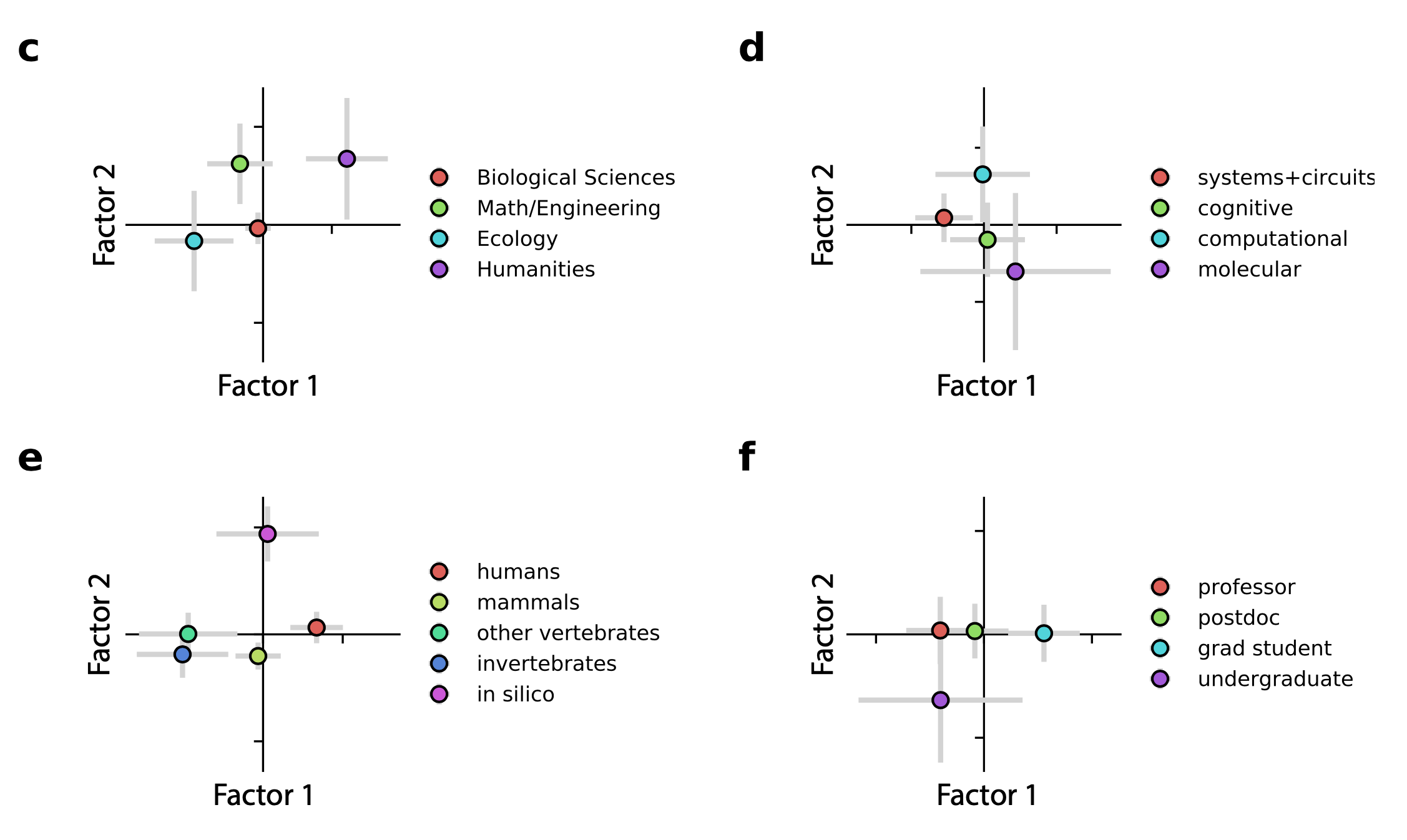Why Tracking is not Behavior#
What is Behavior - a short recap#
In the last session we considered behavior as a selection for flexibility, as the ability of on individual to move, navigate and interact with their surrounding in an ever changing environment. We learned that behavior can be described from different points of view to focus on either the phenomenological, mechanistic, developmental, functional or evolutionary characteristics of behavior.
We also concluded that a closer look at behavior should differentiate between dimensionalities of behavior, from short behavioral motifs, syllables or movems to short actions and large-scale behavioral patterns. Furthermore, we found it useful to distinguish between the structure, the consequences and the spatial relation of behavior.
From Tracking to Behavior#
In Fig. 6 of the last section we saw how Anderson & Perona (2014) lay out a series of different steps required to complete a system for the measurement of behavior in computational ethology. These steps were first tracking, then action classification, and lastly behavior analysis. These stages of analysis follow an integrative, bottom up approach. Higher degrees of detail are synthesized into broader interpretable categories.
Quote
“[…] particular techniques in an academic field can lead to methodological bias which itself delineates the meaning of behavior.” - Calhoun & Hady (2021)
Technological advances in computational ethology have opened new doors for detecting, identifying and tracking individuals, or even multiple body parts of individuals simultaneously. But the segmentation of the stream of tracking data into broader actions, and the clustering of generalized behavioral patterns remains a challenging task, given the little agreement on what behavior actually is.
Definitions of Behavior#
Today we will see from two relevant papers in behavioral biology and neuroscience that scientists, within and between disciplines, not always agree on their definitions of behavior.
Some of the most common definitions of behavior among behavioral biologists:
Tinbergen (1955): ‘The total movements made by the intact animal’.
Beck et al. (1991): ‘Externally visible activity of an animal, in which a coordinated pattern of sensory, motor and associated neural activity responds to changing external or internal conditions’.
Starr & Taggart (1992): ‘A response to external and internal stimuli, following integration of sensory, neural, endocrine, and effector components. Behavior has a genetic basis, hence is subject to natural selection, and it commonly can be modified through experience’.
Wallace et al. (1991): ‘Observable activity of an organism; anything an organism does that involves action and/or response to stimulation’.
Raven & Johnson (1989): ‘Behavior can be defined as the way an organism responds to stimulation’.
Davis (1966): What an animal (or plant) does.
Grier & Burk (1992): ‘All observable or otherwise measurable muscular and secretory responses (or lack thereof in some cases) and related phenomena such as changes in blood flow and surface pigments in response to changes in an animal’s internal and external environment’
True statements about behavior (by majority vote, see Levitis et al. 2009):
‘A developmental change is usually not a behavior.’
‘Behavior is always influenced by the internal processes of the individual.’
‘Behavior is something whole individuals do, not organs or parts that make up an individual.’
‘A behavior is always in response to a stimulus or set of stimuli, but the stimulus can be either internal or external.’
False statements about behavior (by majority vote, see Levitis et al. 2009):
‘Behavior is always in response to the external environment.’
‘A behavior is always an action, rather than a lack of action.’
‘People can all tell what is and isn’t behavior, just by looking at it.’
‘Behavior always involves movement.’
‘Behaviors are always the actions of individuals, not groups.’
‘In humans, anything that is not under conscious control is not behavior.’
‘Behavior is always executed through muscular activity.’
Disagreement defining Behavior#
In their preprint, Calhoun and Hady (2021) develop a survey about what scientists in different disciplines really understand by behavior. As expected from Levitis et al. (2009), they find high disagreement between groups in their views of what does and what doesn’t constitute behavior, but most interestingly they identify stable response clusters to different qualitative definitions of behavior. In Fig. 8 the different clusters indicate consistent differences among disciplines, sub-disciplines of neuroscience, as well as model organism and academic seniority.

Fig. 8 Disagreement defining behavior, from Calhoun & Hady, 2021.#
Definition clusters and Archetypes#
Fig. 9 below summarizes the different qualitative definitions of behavior based on the survey questions, as well as seven distinct archetypes of response type.

Fig. 9 Definitions and Archetypes clustered by Calhoun & Hady, 2021.#
Sample Questions about Behavior#
Most agreed upon statements:

Fig. 10 Agreement to behavior questions, from Calhoun & Hady, 2021.#

Fig. 11 Agreement to not-behavior questions, from Calhoun & Hady, 2021.#
Most disagreed upon statements:

Fig. 12 Disagreement to behavior questions, from Calhoun & Hady, 2021.#

Fig. 13 Disagreement to behavior questions, from Calhoun & Hady, 2021.#
Defining your own Behavior of interest#
Now that you may have a clearer picture of the mess you are getting into, lets think about your own research project ideas.
Take 5 minutes to think about your research project idea
Take 5 more minutes to think about why you are interested in behavior in this particular setting
Take 5 the last 5 minutes to think about how others could misunderstand what you mean by behavior, and how you could remedy that.
Literature#
Calhoun, A., & Hady, A. E. (2021). What is behavior? No seriously, what is it? [Preprint]. Animal Behavior and Cognition. https://doi.org/10.1101/2021.07.04.451053
Levitis, D. A., Lidicker Jr, W. Z., & Freund, G. (2009). Behavioural biologists do not agree on what constitutes behaviour. Animal behaviour, 78(1), 103-110. https://doi.org/10.1016/j.anbehav.2009.03.018
Bonus: Talmo Pereira (Princeton University)#
Decoding Animal Behavior Through Pose Tracking
